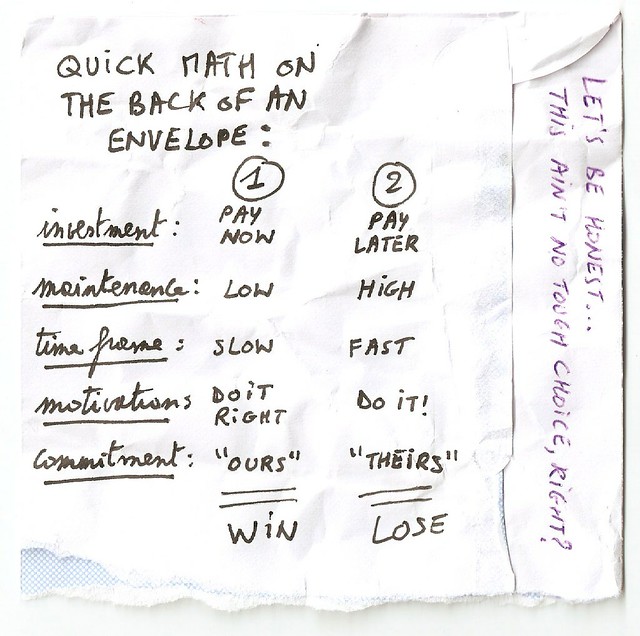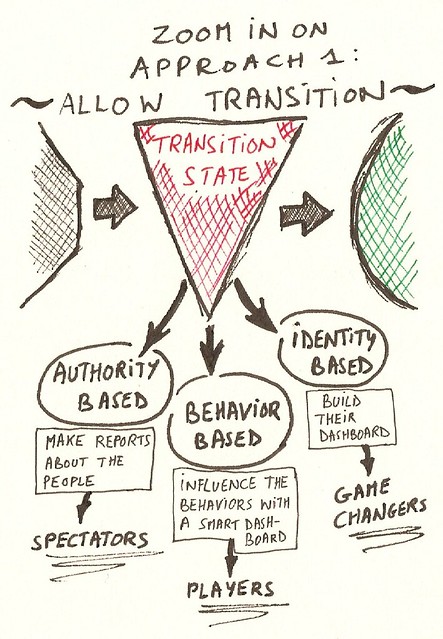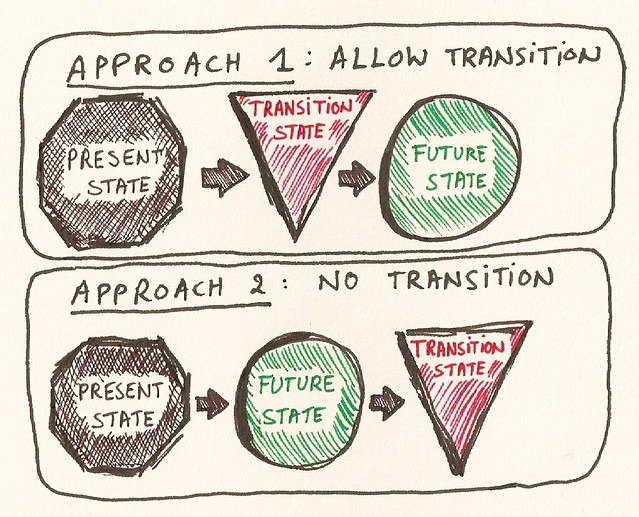The choice of change management is not a yes/no choice. It is a conscious evaluation of the road we want to travel: authority, behavior or identity.
Remember the good old days when change management was explained as the only alternative to murder in the first degree? There was no doubt about what one was supposed to think: either you are a saint caring for your people, or you are a jerk pushing everything down their throats. The choice was really obvious and the drawing to explain it was simple.
I guess it must have been revolutionary at that time because ‘change management’ started to make sense from a ROI (Return On Investment) perspective. Have a look at the back-of-an-envelope calculation below to see how both approaches translate in terms of ROI:

Boardroom convinced? Bring in the consultants. Or… wait… did we miss something. Yes you did.
Albert Einstein once said that everything should be made as simple as possible – but no simpler. The curse of this model is that we think the hard work of figuring out what to do is over once we voted for the first approach. Unfortunately it turns out that when we allow transition – in other words: when we decide to bring an organizational change practitioner on board – implementation rears its ugly head.
You will run into a great number of choices and you will need to decide the balance between an authority based approach, a behavior based approach or an identity based approach.

A brief explanation about the differences:
- Authority based: this is a mathematical approach where change management is reduced to the diagnosis of the organization by measuring and surveying all dimensions that have been outlined in the business case. If you can’t measure it, you can’t manage it – right? Next, the implementation comes down to executing each action that is listed in the benefits realization handbook. The change is implemented ‘upon’ the people. They are merely spectators. For the record: you can claim you did change management because the issues for benefits realization where tackled during the execution of the project. But what will happen once the project team adjourns?
- Behavior based: this is the approach whereby you want to influence the behavior of the people by shaping the path of their behavior. We should make it easier for people to act and behave in a certain way. We can do this with rewards, statuses, achievements, competition, badges, etc. But what will happen when the initial excitement fades away and old habits kick in? Think about the diet or the fitness you started some time ago… still doing it? Or did Mr. Habit take over? Again…
- Identity based: The one thing we should remember is that behavior is not the problem, identity is. As long as we think behavior is the problem, our actions will be focused on rewarding punishing or, at best, shaping or reducing context. What we should search for instead is the gateway to identity in order to shape rituals and habits. They are the ultimate context to anchor sustainable behavior change. This is a tough one because it will require people to identify with the future state and all peers to act accordingly.
This is the real choice we need to make as an organizational change practitioner. Note that the first choice will keep you closely aligned with the project management approach. So if you want to play safe, this is the one to pick. The other two approaches are more grassroots initiatives. You’ll get to know what really makes people tick. Unfortunately you will also learn that your actions are less backed by the specialists who want to implement the project by the book.
So where are we most of the times with our projects?
(No, don’t answer that. I’m afraid to hear the answer.)


